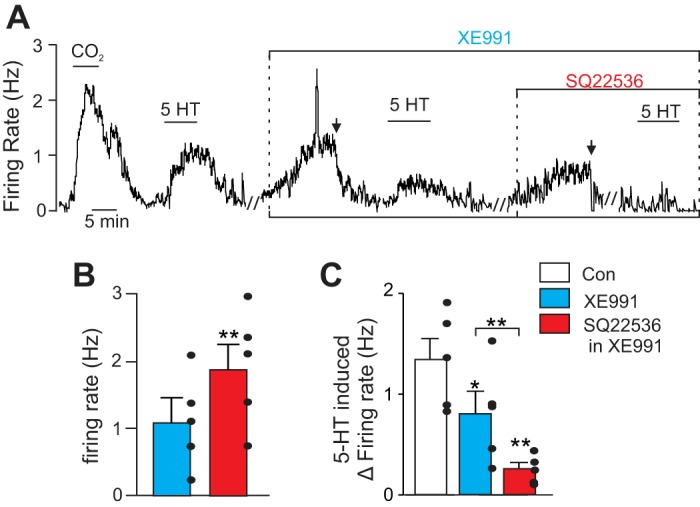Fig. 5.

Serotonin activates HCN channels by a cAMP-dependent mechanism. A: representative trace of firing rate from a chemosensitive RTN neuron. Under control conditions exposure to serotonin (5-HT; 5 μM) increased firing in a CO2 sensitive neuron by ∼1 Hz. After washout of serotonin, bath application of XE991 (10 μM) also increased firing rate by ∼1.2 Hz. In the continued presence of XE991 (with baseline activity adjusted to near control levels by DC current injection), a second exposure to serotonin only increased firing rate by ∼0.5 Hz. Subsequent bath application of the adenylate cyclase inhibitor SQ22536 (100 μM) increased firing rate by ∼0.8 Hz. In the presence of XE991 plus SQ22536 (with baseline activity adjusted to near control levels by DC current injection), a third exposure to serotonin no longer led to increased firing. B: summary data (n = 5 cells) of firing rate responses to SQ22536 when KCNQ channels are blocked with XE991. C: summary data (n = 5 cells) of firing rate responses to serotonin under control conditions, in XE991 alone, and in XE991 plus SQ22536. // Marks 10-min time breaks and ↓ indicates DC current injection. *P < 0.05, **P < 0.01.
